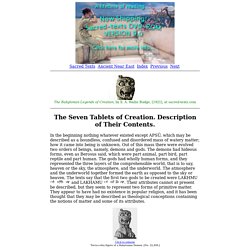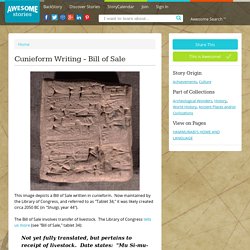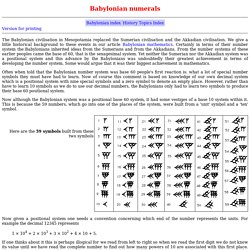

The Chaldean Babylonian King Nebuchadnezzar II. Archaeologists unearth Babylonian treasures. By Khalid al-Ansary BAGHDAD Wed Apr 1, 2009 5:46pm BST BAGHDAD (Reuters) - Iraqi archaeologists have discovered 4,000 artefacts mostly from ancient Babylonian times, including royal seals, talismans and clay tablets marked in Sumerian cuneiform -- the earliest known form of writing.

The treasures came to light, the Tourism and Antiquities Ministry said on Wednesday, after two years of excavations across 20 different sites in the regions between the Tigris and Euphrates rivers, the land ancient Greeks referred to as "Mesopotamia. " As well as Babylonian artefacts, there were finds from the ancient Persian empire and more recent medieval Islamic cities. "The results of this excavation are evidence that Iraq's antiquities aren't going to run out any time soon," Abdul-Zahra al-Telagani, spokesman for the Tourism and Antiquities Ministry, said.
"They also give us the incentive to continue to work to rehabilitate our ancient sites to become tourist attractions. " All About the Babylonian Gods. Written by: ContessaD • edited by: Noreen Gunnell • updated: 1/5/2012 A lot of myths and legends surround Babylonian gods.

The Babylonian Legends of Creation: The Seven Tablets of Creation. Description of Their Contents. Sacred Texts Ancient Near East Index Previous Next The Babylonian Legends of Creation, by E.

A. Wallis Budge, [1921], at sacred-texts.com In the beginning nothing whatever existed except APSÛ, which may be described as a boundless, confused and disordered mass of watery matter; how it came into being is unknown. Babylonian Empire definition of Babylonian Empire in the Free Online Encyclopedia. Warning!

The following article is from The Great Soviet Encyclopedia (1979). It might be outdated or ideologically biased. an ancient state in southern Mesopotamia (region of present-day Iraq) that arose at the beginning of the second millennium B.C. and finally lost its independence in 539 B.C. It obtained its name from the main city Babylon. Prior to the rise of this center Babylonia was known as Sumer and Akkad (and frequently, following tradition, even in later times).
In 1894 B.C. a local dynasty of Amorite origin became established in Babylonia, and under King Hammurabi it succeeded in unifying a large part of Mesopotamia and creating a large centralized slave-owning despotic state. Babylonian brick. Cunieform Writing - Bill of Sale. This image depicts a Bill of Sale written in cunieform.

Now maintained by the Library of Congress, and referred to as "Tablet 34," it was likely created circa 2050 BC (in "Shulgi, year 44"). The Bill of Sale involves transfer of livestock. The Library of Congress tells us more (see "Bill of Sale," tablet 34): Not yet fully translated, but pertains to receipt of livestock. Date states: "Mu Si-mu-ru-um-ki ba-hal" (The year Simurum was destroyed).A cylinder seal has been heavily rolled over the text. Neo-Babylonian Empire. Babylonian god. Marduk, in Mesopotamian religion, the chief god of the city of Babylon and the national god of Babylonia; as such, he was eventually called simply Bel, or Lord.

Originally, he seems to have been a god of thunderstorms. A poem, known as Enuma elish and dating from the reign of Nebuchadrezzar I (1124–03 bce), relates Marduk’s rise to such preeminence that he was the god of 50 names, each one that of a deity or of a divine attribute. After conquering the monster of primeval chaos, Tiamat, he became Lord of the Gods of Heaven and Earth. All nature, including man, owed its existence to him; the destiny of kingdoms and subjects was in his hands. Babylonians. Ishtar - Babylonian Goddess. Timeline of Events in Ancient Babylonia. Code of Hammurabi. Babylonian numerals. Version for printing The Babylonian civilisation in Mesopotamia replaced the Sumerian civilisation and the Akkadian civilisation.

We give a little historical background to these events in our article Babylonian mathematics. Certainly in terms of their number system the Babylonians inherited ideas from the Sumerians and from the Akkadians. From the number systems of these earlier peoples came the base of 60, that is the sexagesimal system. Yet neither the Sumerian nor the Akkadian system was a positional system and this advance by the Babylonians was undoubtedly their greatest achievement in terms of developing the number system.
Often when told that the Babylonian number system was base 60 people's first reaction is: what a lot of special number symbols they must have had to learn. Now although the Babylonian system was a positional base 60 system, it had some vestiges of a base 10 system within it. Here are the 59 symbols built from these two symbols References (9 books/articles) The Talmud. Sacred-Texts Judaism Buy CD-ROM Buy books about Judaism Translated by Michael L.

Rodkinson Book 1: Tract SabbathBook 2: Tracts Erubin, Shekalim, Rosh HashanaBook 3: Tracts Pesachim, Yomah and HagigaBook 4: Tracts Betzh, Succah, Moed Katan, Taanith, Megilla and Ebel Rabbathi or SemahothBook 5: Tracts Aboth, Derech Eretz-Rabba, Derech Eretz-Zuta, and Baba Kama (First Gate)Book 6: Tract Baba Kama (First Gate), Part II and Tract Baba Metzia (Middle Gate)Book 7: Tract Baba Bathra (Last Gate)Book 8: Tract Sanhedrin: Section Jurisprudence (Damages)Book 9: Tracts Maccoth, Shebuoth, Eduyoth, Abuda Zara, and HoriothBook 10: History of the Talmud A search for Talmud at Google will turn up hundreds of thousands of hits, a depressing number of which are to anti-Semitic sites. However, to our knowledge this is the first extensive English translation of the Talmud to be posted on the Internet.
Bibliographic note on Rodkinsons' Talmud Rodkinson's translation went through at least two editions. The Chaldean Babylonian King Nebuchadnezzar II.